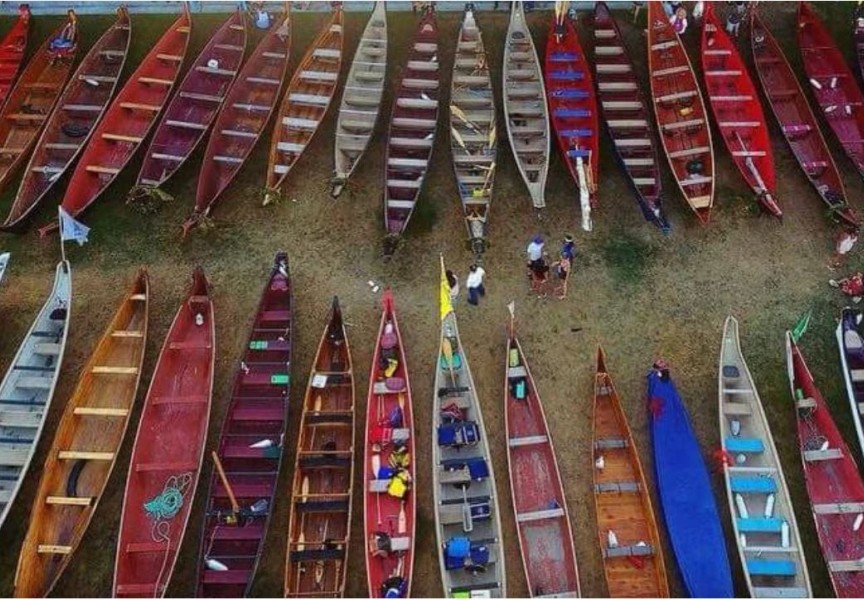This article is part of a series exploring potential reasons behind the decline of Clayoquot salmon.
Clayoquot salmon are not limited only by harvest and rearing habitat. They are also heavily influenced by the ocean environment. In this article I will focus on two large-scale oceanic and atmospheric patterns in the Pacific Ocean and describe how they influence returns of local salmon and help predict periods of trouble.
Early fisheries models assumed that the number of fish going to sea minus the number of fish being caught and minus a constant rate of natural mortality would roughly equal the number of fish coming back to spawn. Like other salmon populations, Clayoquot salmon are not exposed to a constant mortality factor, and this simple model fails to explain the observed declines.
By the end of the 1990s, fisheries scientists began to take into account varying ocean conditions and reflect this in their models of fish returns. For instance, fisheries biologists like Dr. Dick Beamish from the department of Fisheries and Oceans (DFO) began to overlay trends in oceanic conditions (such as temperature, plankton availability, the mix of marine species, weather patterns, etc.) in the North Pacific Ocean with salmon returns. What he noticed was that persistent environmental patterns (called “regimes”) that supported abundant salmon returns were upset by abrupt shifts to new persistent environmental regimes and minimal salmon returns. The Pacific Decadal Oscillation was a term coined in the late 1990s to describe the patterns of regimes that span several decades until a shift takes place, which affects everything in the ecosystem, from plankton to salmon to whales. The idea of regimes challenged the age-old assumptions of “balance” and “equilibrium” in nature.
According to Beamish, several Pacific regimes appear to have occurred in the 20th century; first in about 1900-1924, second in about 1924-1946, third in about 1947-1976, fourth in about 1976-1989, and the fifth in the 1990s. Salmon catches, on the other hand, showed two times of abundance. Salmon returns began to increase in the mid 1920s and persisted through to the 1940s. Then there was a rapid decline in about 1947, and those catches stayed low for about 30 years. In 1977, salmon catches picked up again, peaking in 1989 before another shift.
The above observations show patterns of salmon abundance, which correlate with shifts in ocean productivity. The exact mechanisms that cause the shifts, and the environmental conditions that support abundant salmon returns, are not fully understood or predictable, but those observed patterns do show the importance of studying long-term ocean patterns. They also provide some hope that salmon returns may once again increase after persistent years of low abundance.
Another large scale oceanic pattern that can influence salmon returns is ENSO (El Nino Southern Oscillation), which describes El Niño and La Niña events. El Niño episodes reflect periods of exceptionally warm sea surface temperatures across the eastern tropical Pacific while La Niña episodes represent periods of below-average sea-surface temperatures. These episodes typically last 9 to 12 months. El Niño events, which occur every three to seven years, tend to cause poor conditions for salmon survival at sea, especially when paired with a warming period in the Pacific Decadal Oscillation.
Under normal conditions, upwelling along our coast occurs when natural forces like the Coriolus effect, the Ekman spiral and northwest winds work together to shear water towards the offshore, creating a “void” along the coast causing deeper cooler water, with more nutrients, to fill the “hole” and mix with the surface layer and euphotic zone (i.e., body of water that receives sufficient light for photosynthesis and growth). When upwelling does not occur, the resulting conditions are nutrient poor, warmer waters. The reduction of nutrients means that phytoplankton die, and this affects the entire food chain (remember, phytoplankton are juvenile salmon food).
In contrast La Niña conditions result in cooler than normal ocean temperatures which enhance ocean upwelling conditions resulting in conditions very favorable to Clayoquot salmon production. Note that 2010 was a moderate El Niño winter, and that when ocean conditions do return to normal, it often takes a couple of years for the phytoplankton and zooplankton to reestablish.
Because of the length of Pacific Decadal Oscillation regimes, individuals often have a hard time accurately tracking those trends. Nuu-chah-nulth people didn’t traditionally keep written records, but they did value the memories of elders and passed along stories that recorded environmental events (such as tsunamis) and changes (such as periods of salmon abundance). Now is an especially important time to revive those memories, because it seems that the Pacific Decadal Oscillation and ENSO events alone cannot explain the long-term trends in poor Clayoquot salmon survival.
Katie Beach is a biologist with the Nuu-chah-nulth Tribal Council. Opinions expressed are the author’s. She lives in Tofino.
By Katie Beach







